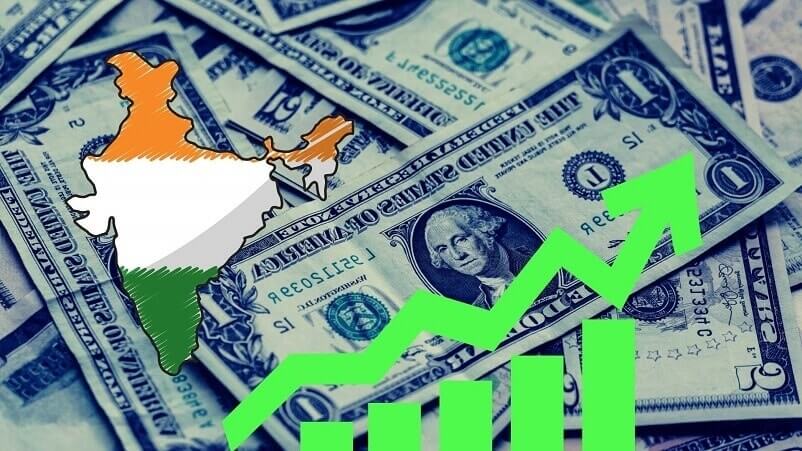In the annals of India’s economic chronicles, the year 1991 stands as a watershed moment, a turning point that forever shaped the trajectory of the nation’s financial landscape. It was in the throes of a severe economic crisis, grappling with dwindling foreign exchange reserves, that India embarked upon a bold and arduous journey of liberalization and reform.

Image: www.coinnewsspan.com
The liberalization policies introduced by the visionary Dr. Manmohan Singh, then Finance Minister, were designed to break the shackles of a stagnant and inward-looking economy. Central to this transformation was the relaxation of controls on foreign exchange, a move that would have a profound impact on India’s foreign exchange reserves.
The Transformation of Foreign Exchange Reserves
Prior to 1991, India’s foreign exchange reserves were meager, hovering around $5.8 billion, a mere fraction of what was required to meet the country’s import needs comfortably. This scarcity presented a constant threat to the stability of the Indian rupee and made it vulnerable to external shocks.
In the aftermath of the economic liberalization, India witnessed a dramatic surge in foreign exchange inflows. Foreign direct investment, portfolio investments, and remittances from overseas Indians poured into the country, buoyed by the newfound confidence in the economy. This influx of foreign capital led to a steady accumulation of foreign exchange reserves, providing a much-needed cushion to the Indian economy.
Factors Driving the Surge in Reserves
The growth in India’s foreign exchange reserves can be attributed to a confluence of factors:
-
Increased foreign direct investment: Liberalization policies made India an attractive destination for foreign investors, who flocked to the country seeking opportunities in various sectors. This led to a significant increase in foreign direct investment, contributing substantially to the country’s foreign exchange reserves.
-
Surge in portfolio investments: India’s opening up to foreign institutional investors (FIIs) attracted large inflows of portfolio capital into the country’s equity and bond markets. These investments further bolstered India’s foreign exchange reserves.
-
Rise in remittances: India witnessed a steady increase in remittances from overseas Indians, particularly from the Gulf region. These remittances played a vital role in augmenting the country’s foreign exchange reserves.
Benefits of Strong Forex Reserves
The accumulation of substantial foreign exchange reserves has conferred numerous benefits on the Indian economy:
-
Enhanced economic resilience: Robust foreign exchange reserves provide India with a buffer against external shocks, such as global economic downturns or fluctuations in the exchange rate. They enable the country to intervene in the foreign exchange market to maintain stability and prevent sharp fluctuations in the value of the rupee.
-
Increased import capacity: Ample foreign exchange reserves allow India to meet its import requirements comfortably, including essential commodities like oil and machinery, even during periods of economic stress. This ensures that the country’s growth trajectory is not hampered by external factors.
-
Reduced external debt vulnerability: By reducing its dependence on external borrowings, India has strengthened its external debt profile. This has improved the country’s creditworthiness and made it less susceptible to foreign debt crises.

Image: currentaffairs.adda247.com
Challenges and Future Outlook
While India has made significant strides in accumulating foreign exchange reserves, challenges remain:
-
Global economic uncertainties: Fluctuations in global economic conditions can impact foreign capital inflows, potentially affecting India’s foreign exchange reserves.
-
Reliance on remittances: Remittances from overseas Indians, while a valuable source of foreign exchange, can be influenced by factors such as global economic conditions and changes in migration patterns.
-
External debt management: India’s external debt, though relatively low compared to many emerging market economies, needs to be managed prudently to avoid future vulnerabilities.
Despite these challenges, the future outlook for India’s foreign exchange reserves remains positive. The country’s strong economic fundamentals, including its growth potential, political stability, and ongoing economic reforms, are likely to continue to attract foreign investors and support the accumulation of foreign exchange reserves.
Indian Forex Reserves After 1991
Conclusion
The journey of India’s foreign exchange reserves since 1991 is a testament to the transformative power of economic liberalization. From a situation of scarcity, India has emerged as a country with robust foreign exchange reserves, a symbol of economic strength and resilience. As the country navigates the ever-changing global economic landscape, these reserves will continue to serve as a valuable asset, safeguarding the Indian economy from external shocks and providing a foundation for sustained economic growth.






